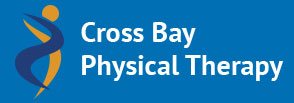Support & Home Health Products to Aid & Recovery
What are Assistive Devices?
Assistive devices are specially produced or generally available products, equipment, instruments, or technologies used by people with disabilities for the purpose of improving or maintaining function and to facilitate independence and overall wellbeing.
Types of Assistive Devices
The different types of assistive devices include:
- Mobility devices: These include walkers, crutches, canes, shoe or heel inserts, braces, and wheelchairs.
- Adaptive devices: These include specialized handles or grips and devices to extend reach such as long-handled shoehorns or utensils for cooking.
- Positioning devices: These include cushions and splints.
- High-Performance devices: These devices are usually lightweight, customized devices that allow people with disabilities to participate in sports and lead an active life.
- Physical Modifications to the Environment: These include grab bars, elevated toilet seats, and ramps.
Indications for Assistive Devices
Assistive devices can be helpful in the management of conditions such as:
- Arthritis
- Back pain
- Bunions
- Hammer toes
- Flat feet
- High-arched feet
- Heel spurs
- Plantar fasciitis
- Sports Injuries
Using Assistive Devices
Being fitted for and using an assistive device will include the following steps:
- Your therapist will discuss your lifestyle, work, hobbies, and expectations for the assistive device.
- Strength, function, and range of motion in the affected limb will be assessed.
- Measurements will be made, and an impression of the body part may be taken with plaster to create the assistive device.
- At a later stage, the device will be positioned and aligned to achieve a comfortable fit.
- You will be instructed on the proper use and care of the assistive device.
- Physical therapy sessions may be scheduled to help optimize function with the device.
Risks and Complications of Assistive Devices
Assistive devices must be obtained from authorized sources and they should be used only as recommended by your doctor or physical therapist. Using the assistive device incorrectly can result in worsening of musculoskeletal symptoms and increased risk of serious injury.
Benefits of Assistive Devices
Assistive devices, as part of a treatment program that includes physical therapy, medication, and other conservative measures can be used to protect, strengthen, support a body part or function and may delay or avoid the need for surgery.
